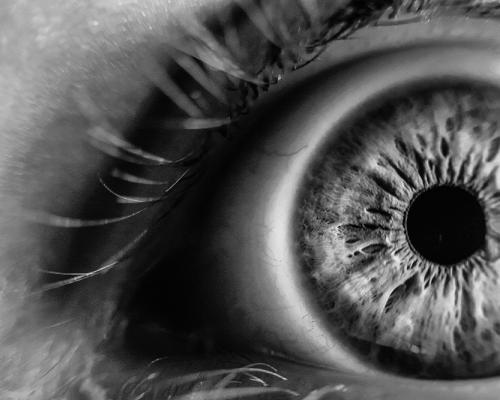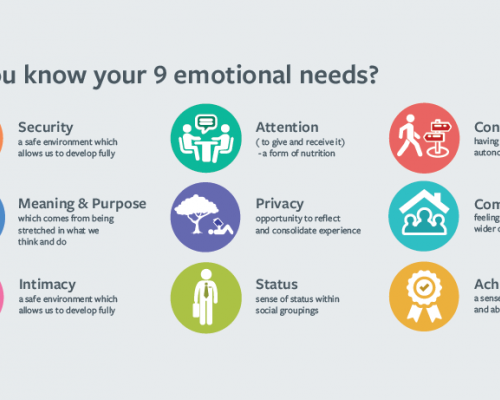Violent Robbery - erasing trauma
CASE HISTORY
Hugh McNab illustrates how to successfully detraumatise even the most severe cases of trauma and anxiety-related disorders and help a client back to work and engaging positively with life once again.
Hugh Macnab, MHGI, completed his Human Givens Diploma in 2002 and now works in private practice. He sends us the following case study, which illustrates how to successfully detraumatise even the most severe cases of trauma and anxiety-related disorders and help a client back to a meaningful livelihood:
"My client was a forty-three year old male security guard who had been involved in a series of violent robberies over a twenty year period. Although he had appeared to cope, the most recent attack (and in hindsight the cumulative effect) had left him severely traumatised. His initial presenting symptoms included intermittent acute chest pain, sweats, nausea, extreme agitation and restlessness, suicidal thoughts, loss of appetite and corresponding heavy weight loss, constant stomach acid, large-area body rashes, severe headaches and insomnia.
"He was unable to work, drive, or even socialise..."
"As a result of his condition, he was unable to work, drive, or even socialise, which meant the loss of friends and family contact. As the condition worsened, he became depressed and virtually reclusive, even unable to do his own shopping, and he developed an obsessive need to have everything tidy and in straight lines — the kitchen cupboards being emptied and re-organized with precision daily; newspapers and magazines were carefully positioned in perfect piles.
"Early psychiatric treatment resulted in the prescription of Fluoxetine and his name being added to the NHS 12 month waiting list for counselling. He was also being treated for blood pressure, chronic stomach acid and the large-area body rashes.
"Thankfully through his employer, he had income protection insurance which provided him with some income during the almost two years he was off work. Having recently seen the results of HG therapy, the insurance company offered him an initial six sessions with an HG therapist.
"At the first session there were two very obvious observations — firstly, he was hyper-anxious and difficult to communicate with — couldn't stop moving or settle down. Secondly, he really wanted to get well!
"Knowing how effective the rewind technique is for traumatic stress, I had thought that this would be my first port of call. However, because of his extreme anxiety, the initial treatment could only really deal with teaching and practising relaxation — learning to reduce the constant irritability and anxiety. The other major contributor to the subsequent success of his treatment was that he was given some hope — all of his symptoms were explained, his behaviours were explained, and he left with a better understanding of his condition, knowing what needed to be done. After all, if you can't understand how something works, how can you fix it?
"Session two took place a week later when the client had practised the techniques taught, and at this time he was noticeably calmer and we were able to commence rewind. In this particular case the rewind was effective, but only partially so. He felt noticeably better, but it didn't show outwardly yet. In fact, we needed four sessions of rewind until he was able to attend therapy in a calm state. Having come across this before, I was not surprised — this multi-rewind is often necessary where the client seems to keep the traumatic memories stored in a layered manner. Un-layering these memories is like peeling an onion — each layer contains yet another specific aspect of the trauma which only appear one at a time.
"As we continued with the rewind process, his symptoms began to dissipate..."
"But as we continued with the rewind process, his symptoms began to dissipate — the chest pain and nausea initially, and all other symptoms followed. At each session as well as progressing with the rewinds, we did quite a bit of challenging false thinking (limiting thoughts), a bit of training (identifying his own thinking styles and challenging black & white thinking). We also spent time while he relaxed helping him remember what it was like to be 'normal' — his whole experience had been so traumatic, normality seemed to be something that only 'other people had'. As he became more familiar with his former self, we began to shift to future rehearsal of how he was going to be after he had recovered — stronger, more empathetic and understanding with others, more approachable and most likely a better partner for female company.
"At the same time, we began working with the obsessive behaviours he had developed. Initially, we agreed simple strategies — deliberately mess the magazines up and record his thoughts; or keep a written record of what he had done so that he could check when he had the inclination to do something whether he had already done it — I set him the task of using his obsessive ability, to be obsessively untidy — a bit of fun, and nothing too complicated — all the while building a small history of success.
"We next focussed on getting him out of the house to somewhere 'relatively' safe and chose the local coffee shop, where he used to enjoy going, but could not even imagine it now. So we started by doing just that — imagining going to the coffee shop. We did some relaxation and then with guided imagery he started to make his way to the coffee shop in his imagination — indicating to me when he began to imagine becoming anxious. At this point, with him still relaxed, I had him imagine going through the relaxation routine I had shown him until he imagined feeling calm again — then to proceed. In this fashion he imagined the complete journey, using imaginary relaxation and enjoying an imaginary coffee and newspaper at the conclusion.
"The challenge was for him then to repeat this experience in the real world, so we established a goal — for him to go to the shop the next day, and when he felt himself beginning to become anxious, immediately stop and do some imaginary relaxation until he felt calm, then to proceed. I would just like to stress that he was not 'really' doing relaxation — there was nothing visible to any observers — he was using more discrete imaginary relaxation only. He was to do this as many times as necessary breaking the journey into as many small pieces as necessary to get to where he wanted to go. Although it took him several attempts, this worked well and became the beginning of the end of his inability to leave the house.
"After six sessions, the majority of symptoms were either completely gone or greatly relieved"
"When dealing with such a complex set of client issues, I find it is really important to develop a plan with the client — agree which issues you are going to address and in which order they are best attended to — steer the client openly with advice and recommendation, but carefully build in their own priorities and needs. This process allows much discussion to take place during which you are actually able to influence both thinking and behaviour substantially. When you have a joint plan, stick to it — the client certainly will.
"The outcome of dealing with this particular client is that after six sessions, the majority of symptoms were either completely gone or greatly relieved and a semblance of normal life was steadily re-emerging. Three further meetings were agreed and these were spread out over nine months to allow for follow-up help on issues relating more to redeveloping social skills and confidence. A new life plan was agreed particularly focussing on returning to work (a new career) — what, how, when, how much etc.
"On a more personal note, when I work with clients I do not have a fixed time available — I deliberately allow myself to alter the length of time I spend with each client, each visit, depending upon their individual needs. I accept that this is not a practical way of working for many, but it is a luxury I have and I take full advantage of it. To those that can do this, I highly recommend it."
Latest Tweets:
Tweets by humangivensLatest News:
HG practitioner participates in global congress
HG practitioner Felicity Jaffrey, who lives and works in Egypt, received the extraordinary honour of being invited to speak at Egypt’s hugely prestigious Global Congress on Population, Health and Human Development (PHDC24) in Cairo in October.
SCoPEd - latest update
The six SCoPEd partners have published their latest update on the important work currently underway with regards to the SCoPEd framework implementation, governance and impact assessment.
Date posted: 14/02/2024












